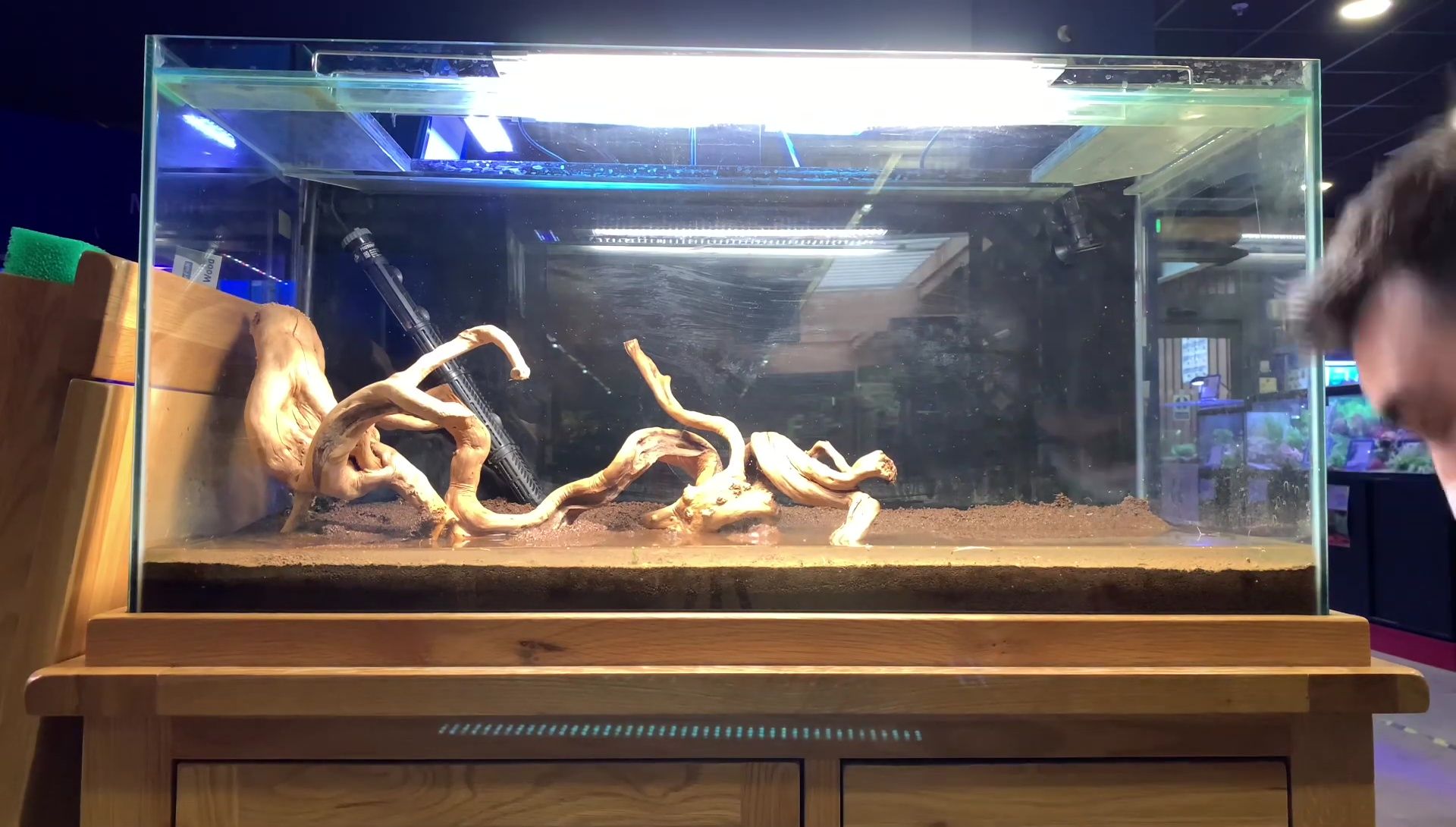This guide provides a step-by-step tutorial for creating a stunning beginner-friendly jungle aquascape. Using readily available materials and easy-to-care-for plants, we'll transform your aquarium into a lush, vibrant underwater world. This project focuses on maximizing visual appeal with minimal effort, making it perfect for those new to aquascaping. We'll explore the art of hardscape arrangement using spiderwood and rocks to create a natural, engaging centerpiece.The centerpiece will be enhanced by the addition of low-maintenance plants like Java moss, Java ferns, Anubias, and various crypts. These hardy plants require little attention, allowing you to focus on enjoying the beauty of your thriving underwater ecosystem. This project emphasizes simplicity and natural aesthetics, guiding you through the process of creating a visually captivating and biologically functional aquascape that's both rewarding and easy to maintain.
Pros And Cons
- Easy for beginners
- Doesn't need planting, can be attached to wood or rocks
- Available at fish keeper or maidenhead aquatics stores
- Comes in various sizes
- Can be arranged to create a desired look
- Large pieces may be difficult to fit into the tank
- Grows onto wood
- Provides a place for fish to lay eggs and shrimp to graze
- Similar to Java Ferns
- Easy to use, doesn't need planting
Read more: Top 5 Driftwood Aquariums for Betta Fish
Hardscape Design: The Foundation of Your Jungle
Creating a visually appealing aquascape starts with the hardscape. This project uses spiderwood (technically a root) as its centerpiece. I initially planned to use two large pieces, but opted for three smaller ones for better tank placement. The goal was to mimic a single, large piece of wood.

The beauty of aquascaping lies in experimentation. There's no rigid plan; you simply arrange the wood until it looks visually interesting. I chose pieces that I thought complemented each other and created a sense of depth and interest.

Adding Depth and Texture with Rocks
After arranging the spiderwood, I incorporated rocks to enhance the aquascape's visual depth. The rocks add a contrasting texture to the wood, providing a more natural and complex aesthetic. The placement of rocks and wood should enhance the overall design.

Careful placement of rocks creates crevices and hiding spots, enriching the habitat for fish and invertebrates. Consider layering rocks to create interesting visual perspectives and visual depth.

Introducing Plants: Java Moss, Java Fern & More
Java moss, affixed to the wood with JBL glue, provides a beautiful green contrast. This moss creates excellent spawning sites for fish and grazing areas for shrimp, adding a functional element to the aquascape.

Java ferns, equally beginner-friendly, were also attached to the wood. These plants don’t require planting; simply attaching them to the wood or rocks suffices. I also added Valencia crypt at the back, offering height and texture without overwhelming the tank.

Completing the Jungle Look: Anubias, Crypts, and More
Anubias, similar to Java ferns in their ease of care, were added to further enhance the jungle theme. Anubias plants also don’t need planting and can be attached to rocks and wood.

Finally, I used various crypts (including parva crypts in the foreground) to complete the lush undergrowth. These plants, while prone to initial melting, quickly recover and provide dense carpeting.
Final Touches & Conclusion
The final aquascape showcases a dense, visually engaging jungle aesthetic, achieved through the careful arrangement of hardscape and easy-to-care-for plants. This design is accessible for beginners and provides a natural, thriving habitat.

The use of spiderwood, rocks, Java moss, Java ferns, Anubias, and crypts creates a well-balanced and visually striking ecosystem, perfect for beginners. The overall design is both aesthetically pleasing and low maintenance.

